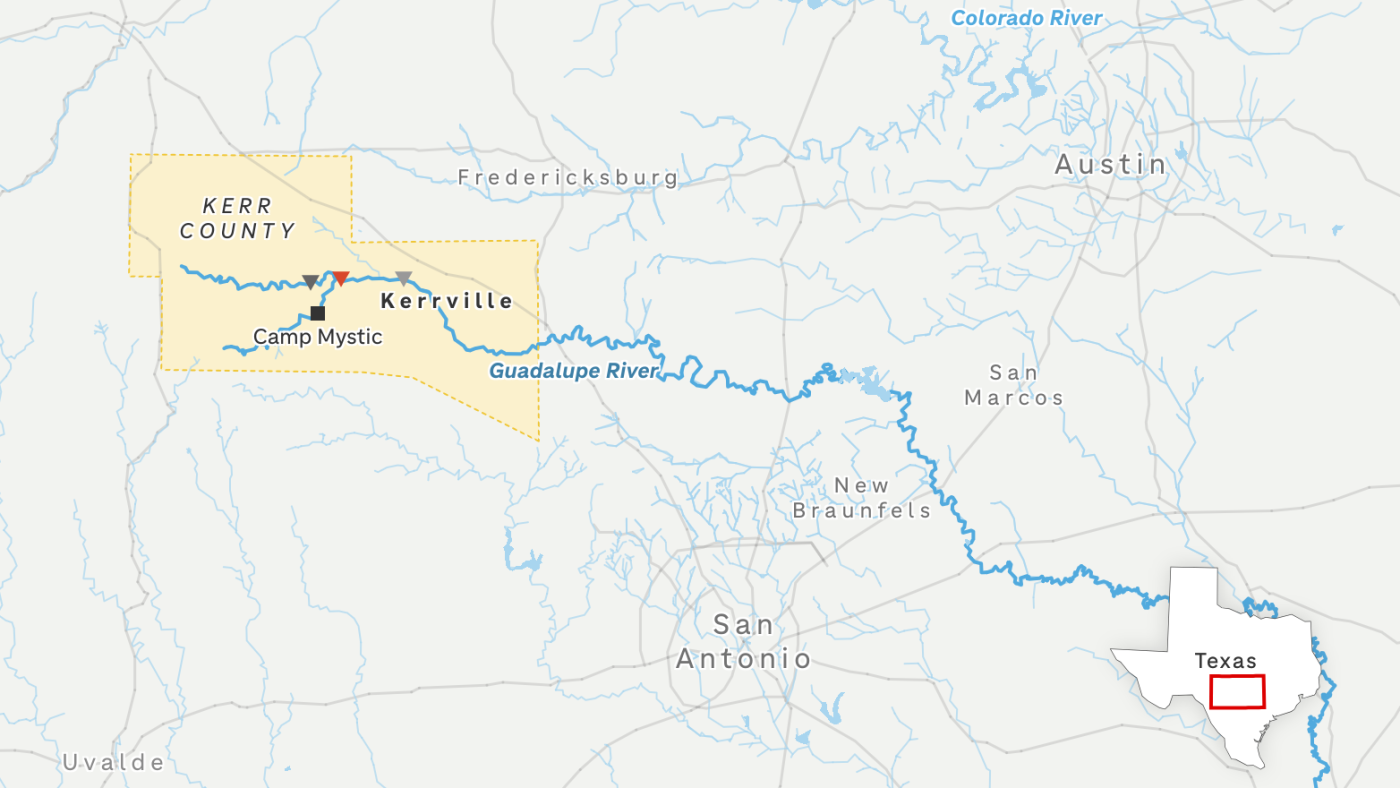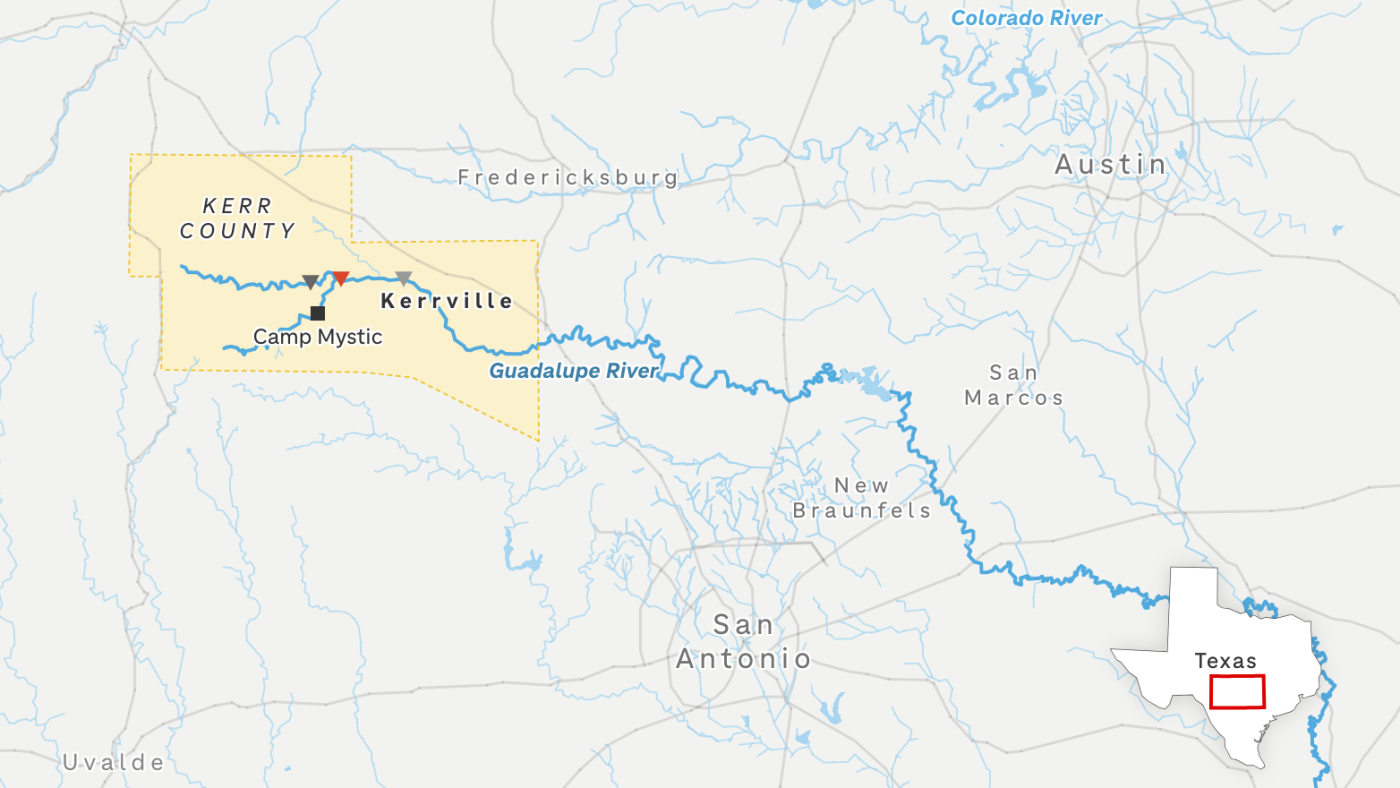The Texas Hill Country, known for its scenic beauty and recreational opportunities, became the site of a devastating tragedy during the Fourth of July weekend. Catastrophic flooding, triggered by unprecedented rainfall, swept through the region, transforming the usually tranquil Guadalupe River into a raging torrent. The disaster claimed dozens of lives, displaced families, and left communities in ruins. This analysis explores the geographic factors, timeline of events, and magnitude of destruction, aiming to understand how a holiday weekend turned into a nightmare.
A River Rises: The Anatomy of a Flash Flood
The Guadalupe River, particularly in Kerr County, became the epicenter of the disaster. In just 45 minutes, the river’s water level surged by an astonishing 26 feet in some areas, overwhelming campgrounds and residential zones. A flood gauge near Kerrville and Camp Mystic recorded a rise of more than 25 feet in two hours. This rapid escalation caught many off guard, making evacuation efforts incredibly difficult, especially as the peak of the flooding occurred overnight.
Several factors contributed to the ferocity of the flood. Up to 10 inches of rain inundated central Kerr County, causing the river to swell and breach its banks. The Texas Hill Country’s unique geography also played a significant role. The region’s dramatic elevation changes, characterized by steep hills and narrow valleys, amplified the flood’s intensity, turning normally manageable waterways into destructive forces. The rapid runoff from these steep slopes exacerbated the flooding, as water had little time to absorb into the ground.
The lack of adequate flood control infrastructure in the area also contributed to the disaster. While floodplains are naturally designed to handle excess water, human development and urbanization have altered these natural systems. The construction of buildings, roads, and other infrastructure in flood-prone areas can disrupt natural drainage patterns, leading to increased runoff and more severe flooding.
A Timeline of Terror: How the Disaster Unfolded
The events of that fateful weekend unfolded with terrifying speed. While a flood watch was issued by the National Weather Service, the speed and intensity of the flooding appeared to have taken many by surprise. The Guadalupe River’s transformation from a gentle stream to a destructive force happened in a matter of minutes, leaving little time for residents and visitors to react.
The deluge began on Friday, with heavy rains causing the Guadalupe River to swell rapidly. As the river rose, it engulfed low-lying areas, including campgrounds and residential areas along its banks. The darkness of night compounded the danger, making it difficult for people to assess the situation and escape to safety. The initial hours were marked by frantic calls for help, as people found themselves trapped in rising waters. First responders faced immense challenges in reaching those in need, hampered by the darkness, the swift currents, and the sheer scale of the disaster.
The search for missing individuals became a prolonged and heart-wrenching effort, with rescue teams meticulously combing the riverbanks and surrounding areas. The recovery process was slow and arduous, as the floodwaters receded, revealing the extent of the devastation. The sheer volume of water and debris made it difficult to navigate the affected areas, and the emotional toll on rescue workers was immense.
The Human Cost: Lives Lost and Communities Shattered
The human toll of the Texas floods is staggering. The latest reports indicate that at least 91 people have died. The floods claimed the lives of entire families, vacationers, and children. The emotional impact on the survivors and the wider community is immeasurable. Beyond the immediate loss of life, many people lost their homes, possessions, and sense of security. The images of submerged homes, debris-strewn landscapes, and distraught families paint a grim picture of the disaster’s impact.
The tragedy at Camp Mystic, where dozens of children were caught in the floodwaters, is particularly heartbreaking. The loss of young lives underscores the vulnerability of even well-established locations to the unpredictable forces of nature. The camp, which had been a popular destination for families for decades, was completely unprepared for the sudden and severe flooding. The rapid rise of the river left campers with no time to react, and many were swept away in the currents.
The economic impact of the disaster is also significant. The flooding caused extensive damage to infrastructure, including roads, bridges, and utilities. The cost of repairing this damage will be substantial, and the economic disruption will be felt for years to come. Businesses in the affected areas have also suffered, with many forced to close temporarily or permanently due to the damage.
Echoes of the Past: Lessons Unlearned?
It is deeply concerning to note that a similar flood happened in the same area in 1987. This raises the question of whether adequate measures were taken to prevent a recurrence of such a catastrophic event. The apparent lack of preparedness and the element of surprise among officials suggest that there is a need for a thorough review of existing flood control measures, warning systems, and emergency response protocols.
The rapid development and urbanization in the Texas Hill Country may have also contributed to the increased vulnerability to flooding. The construction of buildings and infrastructure in flood-prone areas can alter natural drainage patterns and exacerbate the impact of heavy rainfall. The lack of zoning regulations and building codes in some areas may have also played a role, allowing development in high-risk zones.
The 1987 flood should have served as a wake-up call, prompting officials to implement stricter regulations and invest in flood control infrastructure. However, it appears that many of these lessons were not learned, and the same mistakes were repeated. This tragedy highlights the need for a comprehensive review of flood management policies and the implementation of proactive measures to mitigate the risk of future disasters.
A Future Imperiled: Weathering the Storms to Come
The Texas floods serve as a stark reminder of the power of nature and the importance of preparedness. As climate change continues to intensify extreme weather events, it is crucial to learn from this tragedy and take proactive steps to mitigate the risk of future disasters.
This includes investing in improved flood control infrastructure, such as dams, levees, and drainage systems. It also requires implementing stricter regulations on development in flood-prone areas, ensuring that new construction is designed to withstand the impact of flooding. Building codes should be updated to reflect the latest scientific understanding of flood risks, and developers should be required to conduct thorough environmental impact assessments before constructing in high-risk areas.
Effective early warning systems are essential to provide timely alerts to residents and visitors, giving them ample time to evacuate to safety. These systems should be based on real-time monitoring of weather conditions and river levels, coupled with clear and concise communication channels to reach the public. The use of advanced technologies, such as satellite imagery and mobile alerts, can enhance the effectiveness of these systems.
Beyond the Horizon: Rebuilding and Remembering
The road to recovery for the affected communities will be long and challenging. Rebuilding homes, restoring infrastructure, and providing support to those who have lost loved ones will require a sustained and coordinated effort from government agencies, non-profit organizations, and the wider community.
But beyond the physical rebuilding, there is also a need for emotional healing and remembrance. The memory of those who lost their lives in the floods must be honored, and their stories should serve as a reminder of the importance of preparedness and community resilience. Memorials and commemorative events can help the community come together and support one another in the healing process.
The Texas floods were a tragedy of immense proportions, a stark reminder of nature’s power and humanity’s vulnerability. The hope moving forward is that this serves as a lesson. By learning from this disaster, we can better prepare for the challenges that lie ahead and build more resilient communities that can withstand the forces of nature. The memory of those who lost their lives must not be forgotten, and their stories must serve as a catalyst for change.








